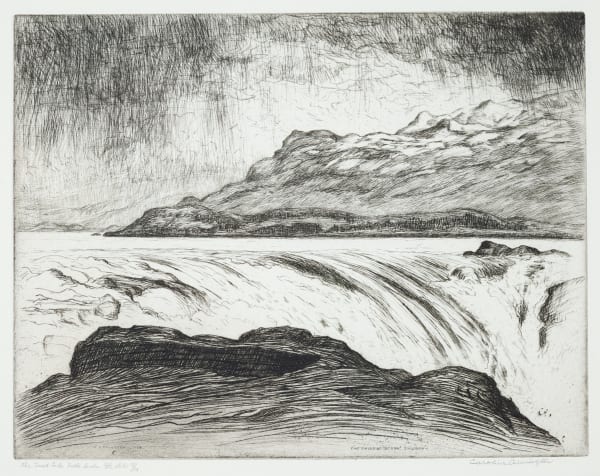Caroline Helena Armington (September 11, 1875– October 25, 1939) born in Brampton, Ontario was a pioneering Canadian artist known for her detailed etchings. Armington's artistic career spanned across Canada, the United States, and Europe, where she and her husband, Frank Milton Armington, became prominent figures in the Paris art scene.
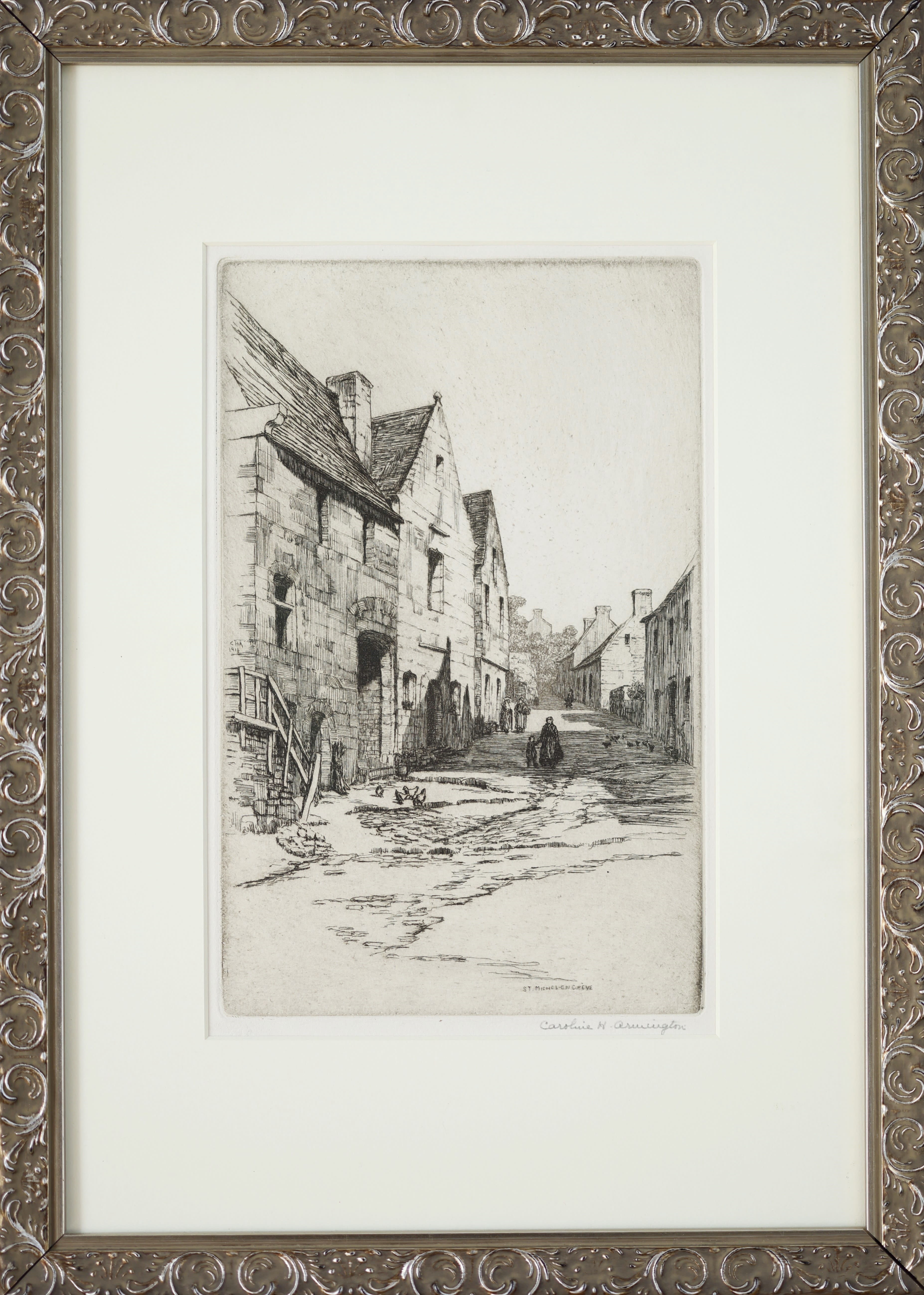
Caroline Armington; St. Michel-en-Greve
Early Life and Education
Armington’s art education began in Toronto under the tutelage of her father’s cousin, J. W. L. Forster, a renowned portrait artist in Canada. Though her family was initially unsupportive, Caroline’s passion for art persisted. She worked as a nurse to finance her travels to Europe in 1900, where she met and married Frank Armington. The couple spent several years in Paris, further developing their artistic skills and exhibiting their work internationally.
Artistic Evolution and Achievements
Caroline Armington’s early years in Paris were marked by study at prestigious institutions such as the Académie Julian and Académie de la Grande Chaumière. She became known for her meticulous etchings, often depicting European architectural vistas, quiet canals, and urban scenes. Her style was deeply influenced by French Impressionism, though her work remained more controlled and detailed.
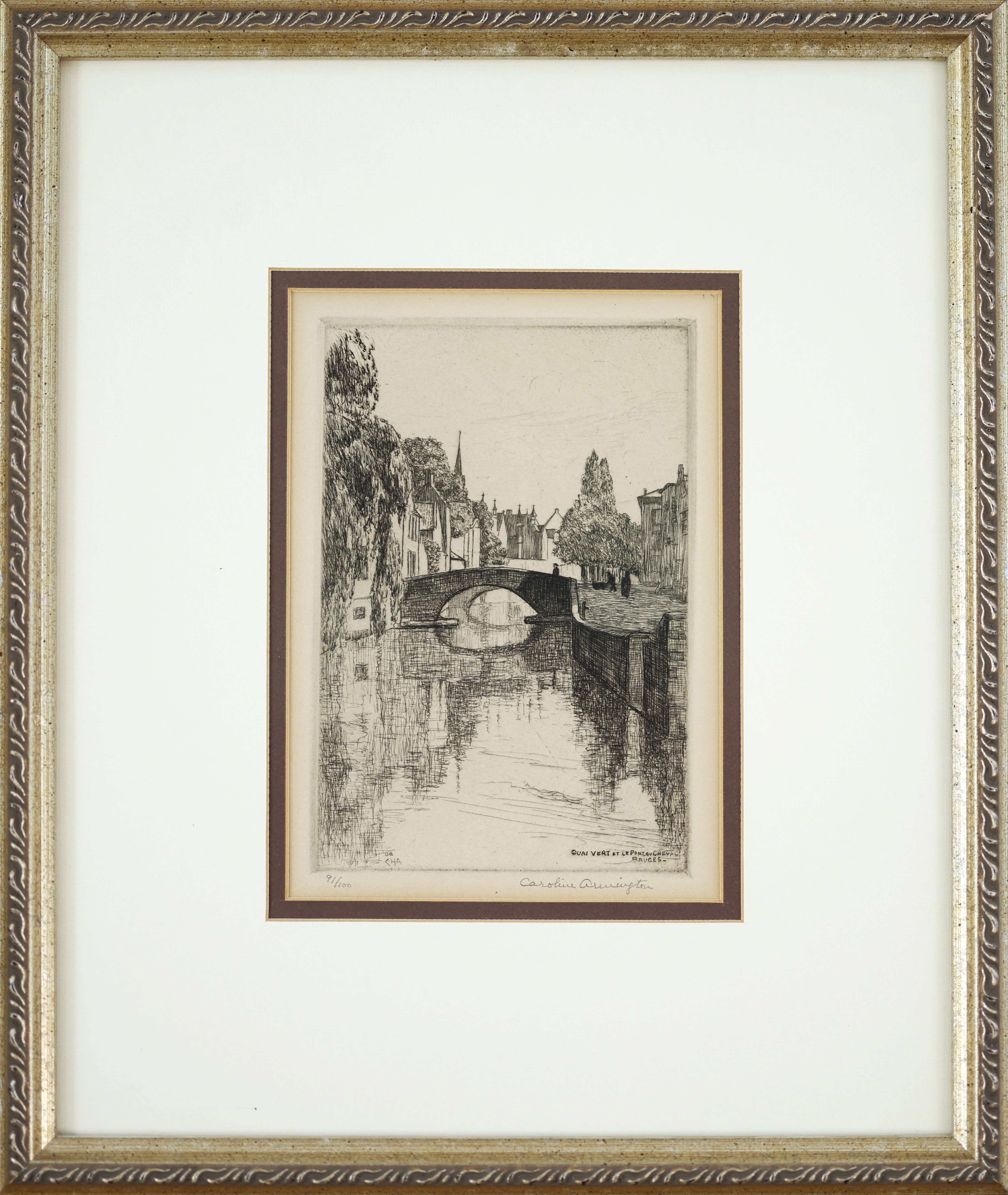 Caroline Armington; Quai Vert Et Le Pont Du Cheval
Caroline Armington; Quai Vert Et Le Pont Du Cheval
Her etching of The Seine and Notre-Dame, Paris (1909) was one of the pieces purchased by the National Gallery of Canada in Ottawa, marking a significant step in her professional recognition. The Canadian Pacific Railway later commissioned several landscapes from the Armingtons, and some of their works were displayed in major institutions like the British Museum.
Armington’s skill earned her multiple exhibitions, including notable showcases at the Salon d’Automne in Paris (1935) and the Brooklyn Life magazine cover in 1924. During the First World War, both Armingtons served with the American Ambulance Field Service, with Caroline working as a nurse. This period did not stop her artistic output, and she produced several powerful scenes of Parisian life during the conflict.
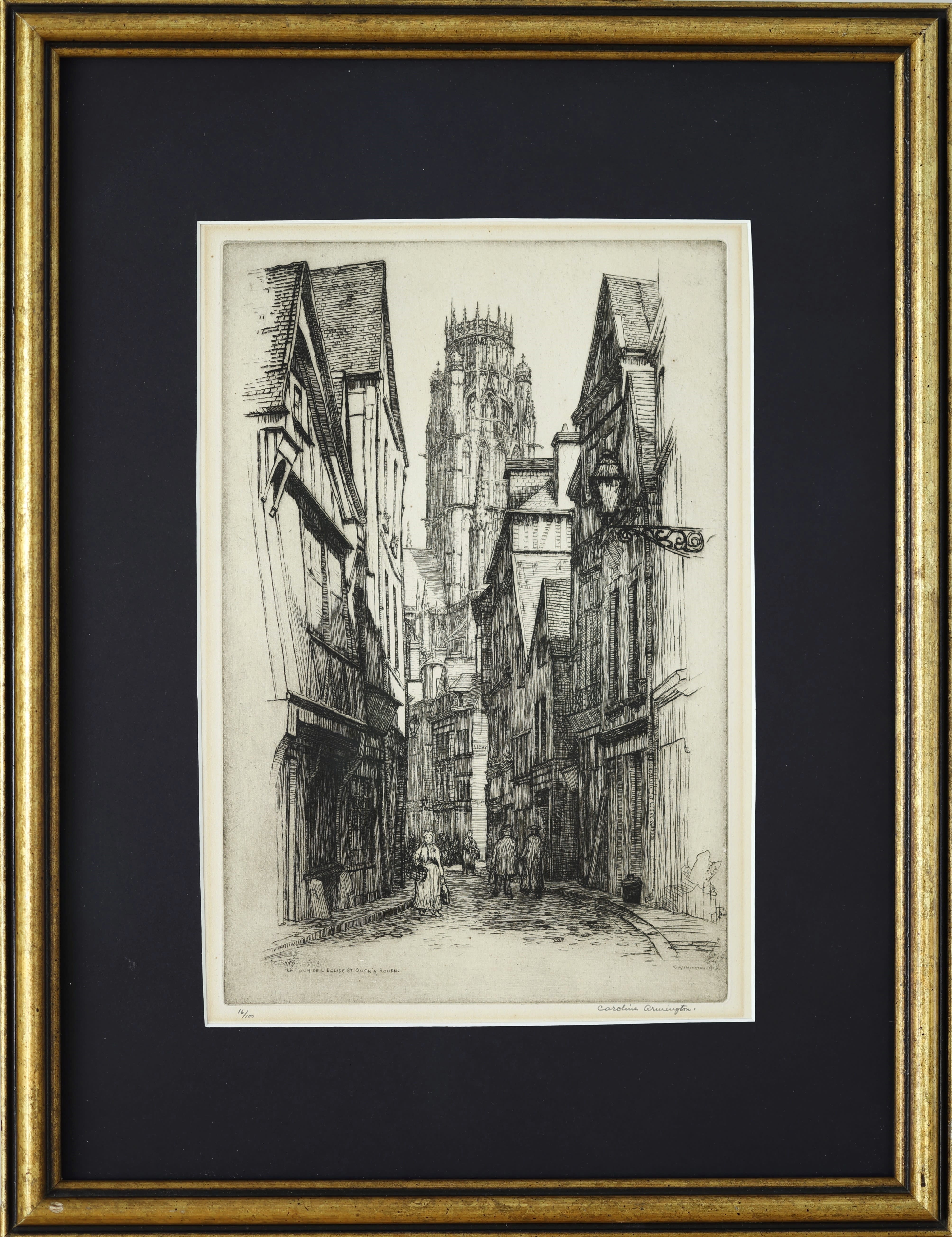
Caroline Armington; La Tour de L'Eglise
Later Career and Recognition
In the 1920s and 1930s, Caroline’s etchings continued to gain widespread acclaim, with exhibitions in major galleries in New York, Detroit, Toledo, and Chicago. Her works were collected by institutions such as the T. Eaton Company and the Cleveland Museum of Art. Caroline also had a solo exhibition at the Corcoran Gallery in Washington.
Caroline’s artwork often focused on architectural and urban scenes, using delicate lines and contrasts to create intricate, almost dreamlike representations of her surroundings. Despite her commercial success, she was not as well-known in Canada as she was abroad, particularly in the United States and France. It wasn’t until the late 20th century that Canadian art historians began revisiting her legacy and bringing her back into the fold of national art history.
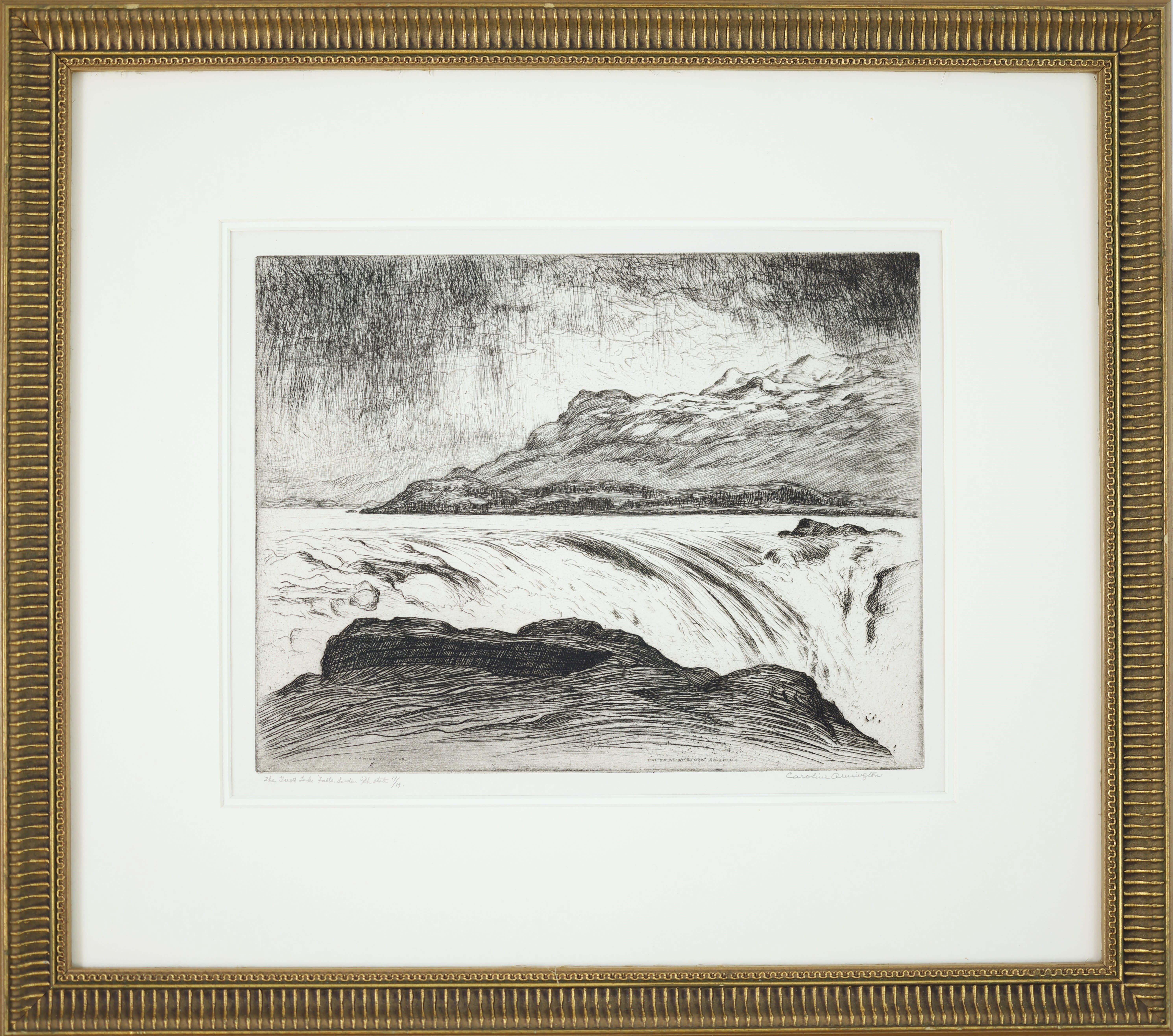 Caroline Armington; The Falls at Stora, Sweden
Caroline Armington; The Falls at Stora, Sweden
Legacy
Caroline Armington passed away on October 25, 1939, in New York City, shortly after relocating there with her husband due to declining health and the onset of World War II. Her work, especially her etchings, remains a vital part of collections across North America and Europe, with a substantial body of her art held in the Peel Art Gallery (Brampton), the Bibliothèque nationale de France, and the British Museum. Caroline’s contributions to Canadian art continue to be celebrated today, with her works regularly featured in exhibitions and academic studies.
Caroline Helena Armington’s life was one of perseverance and dedication to her craft. She defied societal expectations and financial struggles to carve out a significant place for herself in the global art scene.

